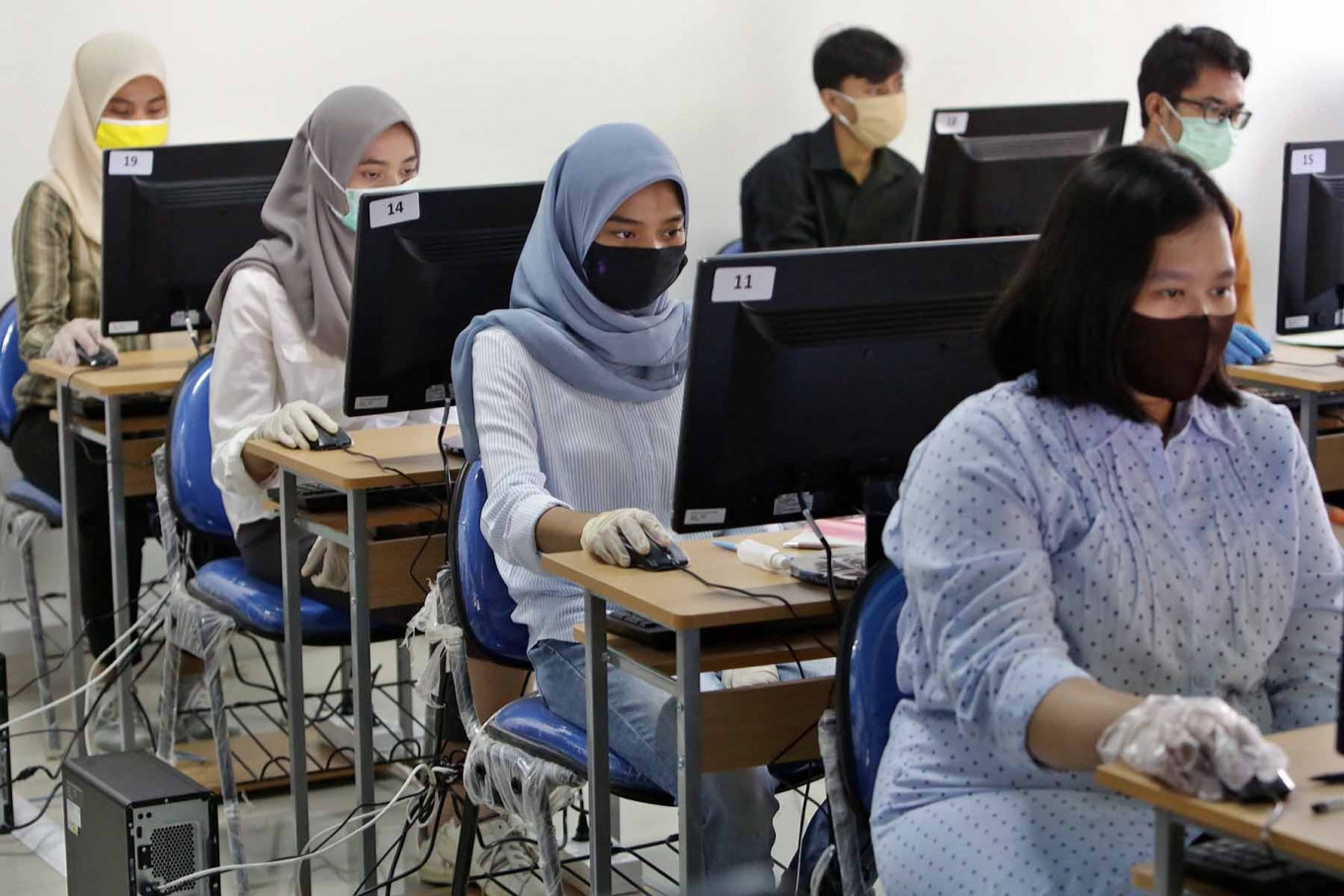Popular Reads
Top Results
Can't find what you're looking for?
View all search resultsPopular Reads
Top Results
Can't find what you're looking for?
View all search resultsDo or die as youth dominate demographics
Population bonus could lead to growth or mass unemployment
Change text size
Gift Premium Articles
to Anyone
I
ndonesia’s younger population, the so-called Gen-Z and the millennials, now make up more than half of its citizens, according to the latest Statistics Indonesia (BPS) census, signaling the peak of the country’s demographic bonus period, which experts warned could make or break the economy, especially during the COVID-19 outbreak.
Gen-Z, defined as people born between 1997 and 2012, contribute 28 percent of the population, the largest chunk, while millennials, born between 1981 and 1996, contribute 26 percent, according to the 2020 BPS population census announced on Thursday.
Overall, productive-age citizens, between the ages 15 and 64, made up 70.72 percent of the population, the highest share since the decennial census began in 1961 and a tell-tale sign of a country entering its fertile period.
“There is definitely either a window of opportunity or a door to disaster here,” Indonesian Institute of Sciences (LIPI) demographics researcher Nawawi told The Jakarta Post via text message on Friday.
“It depends on how the government sees this opportunity that has been presented with the domination of Gen-Z and millennials. If not managed properly, it will be a disaster, an economic burden.”
Demographers and economists have warned that such a demographic bonus carried with it the potential to trigger economic growth or massive unemployment, depending on Indonesia’s ability to create jobs and boost workers’ productivity.
“This increasingly educated and IT-savvy youth is an asset that can be used to boost overall productivity and economic growth,” according to a 2014 World Bank report on the next decade’s projection, titled “Indonesia: Avoiding the Trap”.
“With the right policies in place to utilize this labor, Indonesia is poised to benefit from a demographic ‘dividend’ before the population starts to age in 2025-30.”
The government’s recent passing of the Job Creation Law was made in part to capitalize on the demographic bonus, which according to a previous BPS study, runs from 2012 to 2036 with a peak in 2021.
President Joko “Jokowi” Widodo has envisioned Indonesia as a developed country by 2045, with a near-zero percent poverty rate and an annual per capita income of Rp 320 million (US$22,922), a more than fivefold increase from today’s level. The GDP is then expected to reach $7 trillion, from a little over $1 trillion at present, placing the country among the top five largest economies by its 100th year of independence.
However, the COVID-19 outbreak has wreaked havoc on the job market, causing 2.67 million people to lose their jobs between 2019 and 2020, according to BPS last year, bringing the unemployment rate to 7.07 percent in August, the highest level since 2011, as the country entered its first recession in two decades.
Read also: Unemployment surges to decade high as COVID-19 causes millions to lose jobs
Meanwhile, amid uncertainties and the economic slowdown, fresh graduates and professionals are also facing tougher competition in the job market, with job portal websites like Jobstreet Indonesia reporting last year that the number of jobseekers had doubled during the pandemic.
Institute for Development of Economics and Finance (Indef) executive director Tauhid Ahmad said on Nov. 23 that unemployment could continue to rise by 3.6 million people, dominated by newcomers to the workforce because of a lack of jobs.
Meanwhile, Indonesia has also long struggled with low worker productivity and education levels compared to its economic peers. Indonesian students, for example, scored among the lowest in science, reading and mathematics among their peers from 79 countries who participated in the 2018 OECD Program for International Student Assessment (PISA).
“Indonesia has a lot of resources for development. The challenge is to get the investments needed to raise the younger generation’s productivity,” Rika Kumala Dewi, a development researcher at Jakarta-based Smeru Institute, said on Friday.
“Otherwise, human capital would be our most binding constraint in the near future.”
She added that raising education levels and productivity was also necessary to prevent younger Indonesians from falling down the economic ladder as they grow older.
“The fact is that our poor elders have low levels of education.”
Read also: Preemployment card program sees limited reach in eastern Indonesia
LIPI’s Nawawi added that the government could expand its vocational programs, such as those under the Education Ministry and the Manpower Ministry, as well as the Kampus Merdeka (Freedom Campus) program.
The latter, initiated by the Education Ministry, grants greater autonomy to local universities to design courses in cooperation with universities abroad.
The government has also been running the preemployment card program, which involves basic skilling and social assistance aimed at helping workers and small business owners affected by the pandemic.
The BPS census also shows that Indonesia’s population is aging, another key sign that a country is undergoing a demographic bonus. The proportion of elderly people, defined as those aged over 65 years, rose over the past decade while the number of children, those aged less than 14 years and classified as the “post-Gen-Z” generation, declined.










